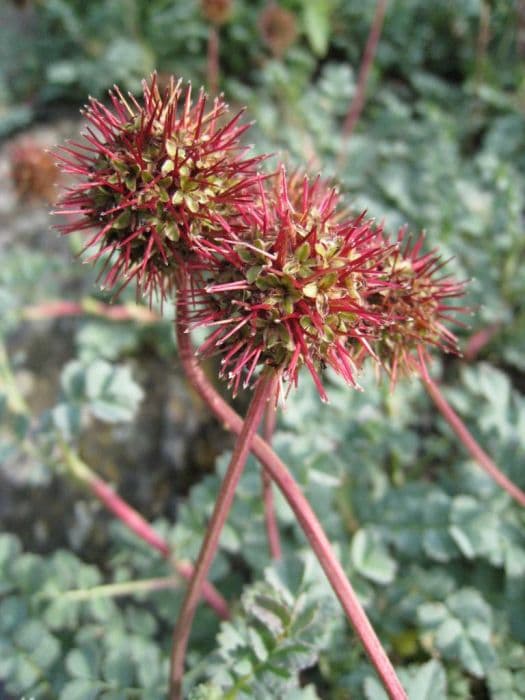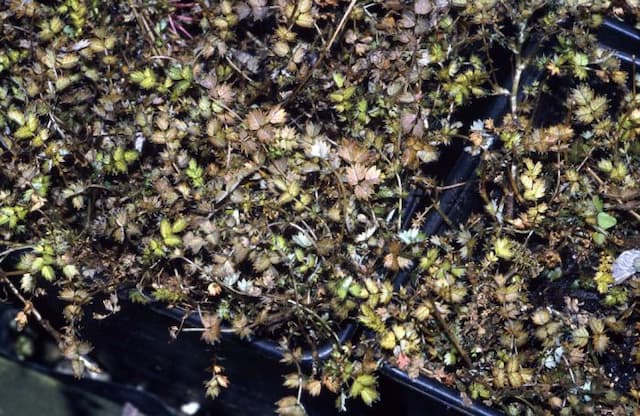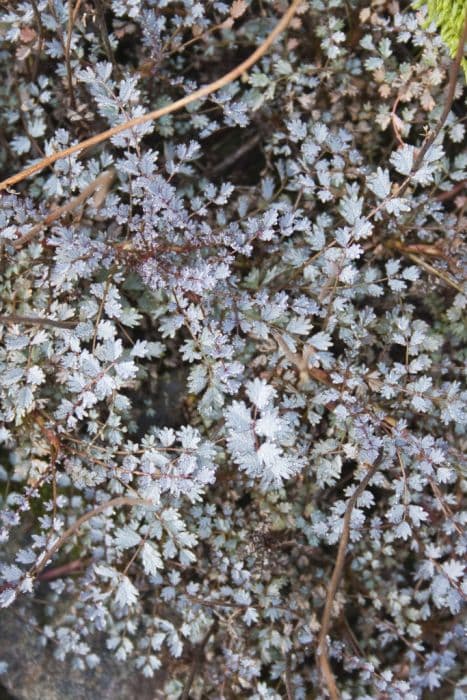Wild Himalayan Pear Pyrus pashia

ABOUT
Commonly known as the wild pear, Pyrus pashia is characterized by its attractive foliage and seasonal changes in appearance. The leaves of this plant are typically bright green, glossy, and have an elongated oval shape with finely serrated edges. During the spring, the plant becomes particularly ornamental as it produces beautiful white or pale pink flowers that have a delicate appearance and are arranged in clusters. The blossoms give off a pleasant fragrance and are a source of nectar for pollinators such as bees. After flowering, the wild pear develops small pear-shaped fruits that are yellowish or brownish when ripe. The fruit's skin can be somewhat rough, and while smaller than the cultivated pears, they offer an edible treat for wildlife and can be used in local culinary practices. Throughout the seasons, the foliage undergoes a transformation, showcasing vivid autumn colors ranging from yellow to reddish shades before the leaves fall. The wild pear's bark is another distinct feature; it is typically grey-brown and can be slightly cracked or textured, adding to the plant's visual interest year-round. This description of the wild pear's appearance highlights its natural beauty and the role it plays in its ecosystem, providing aesthetic value and supporting local fauna.
About this plant
 Names
NamesSynonyms
Wild Pear, Forest Pear, Himalayan Pear, Indian Wild Pear.
Common names
Pyrus kumaoni, Pyrus nepalensis, Pyrus variolosa.
 Toxicity
ToxicityTo humans
Pyrus pashia, commonly known as the Indian pear, is not typically considered toxic to humans. Edible fruits are often consumed without adverse effects. However, as with any plant, individual allergies or sensitivities may exist, and consuming large quantities of any part of the plant that is not commonly eaten, such as the leaves or seeds, could potentially cause gastrointestinal discomfort due to natural plant compounds. It's important to only consume the parts of the plant known to be edible, in appropriate quantities, and to consult a healthcare provider if experiencing adverse reactions after consumption.
To pets
The Indian pear, or Pyrus pashia, is not commonly reported to be toxic to pets. As with humans, the fruits are edible and are not known to cause harm when consumed in moderation. However, caution should be exercised because pets can have individual sensitivities, and the ingestion of excessive amounts of seeds or other non-fruit parts of the plant could potentially cause mild gastrointestinal upset due to differing animal metabolisms and digestive systems. Always monitor pets closely if they have access to or have ingested parts of this plant, and consult with a veterinarian if any unusual symptoms arise.
 Characteristics
CharacteristicsLife cycle
Perennials
Foliage type
Deciduous
Color of leaves
Green
Flower color
White
Height
20 feet (6 meters)
Spread
20 feet (6 meters)
Plant type
Tree
Hardiness zones
7
Native area
Asia
Benefits
 General Benefits
General Benefits- Edible fruit: The fruit of Pyrus pashia, commonly known as Wild Himalayan Pear, can be consumed fresh or used in various culinary preparations.
- Habitat for wildlife: This plant serves as a habitat for various species of birds and insects, which find shelter and food within its branches.
- Ornamental value: With its attractive white flowers and overall graceful appearance, the Wild Himalayan Pear can be used for ornamental purposes in landscaping and gardens.
- Soil erosion control: The extensive root system of Pyrus pashia helps stabilize the soil, reducing erosion on slopes and hilly areas.
- Shade provider: The plant's canopy offers shade, making it beneficial for planting in parks and rural areas to protect against sunlight.
- Ecosystem support: As part of forest ecosystems, it contributes to the overall health and diversity of plant life within its native habitat.
- Timber and woodwork: The wood of the Wild Himalayan Pear is used for making agricultural implements, as well as in construction and carpentry.
 Medical Properties
Medical Properties- Antioxidant: Pyrus pashia is known to possess antioxidant properties due to the presence of phenolic compounds, which can help in reducing oxidative stress in the body.
- Antimicrobial: Certain extracts from the plant have displayed antimicrobial activity against a range of pathogens, suggesting its potential for treating infections.
- Anti-inflammatory: The plant has been reported to exhibit anti-inflammatory effects, which may make it beneficial for reducing inflammation-related conditions.
 Air-purifying Qualities
Air-purifying QualitiesThis plant is not specifically known for air purifying qualities.
 Other Uses
Other Uses- Pyrus pashia, commonly known as the Wild Himalayan Pear, can be used as a rootstock for grafting cultivated pear varieties, which may impart increased hardiness to the grafted plants in colder regions.
- The wood of the Wild Himalayan Pear is valued for tool handles due to its strength and durability, making it an excellent material for agricultural instruments.
- The tree's timber can also be utilized in construction, particularly for making sturdy furniture or interior woodworking that requires robust material.
- In local traditional practices, the leaves and branches are sometimes used for fodder, providing nutritional value to livestock particularly in the winter months.
- Fruit pulp from the Wild Himalayan Pear can serve as a natural dye, providing a light brown hue to fabrics when used in traditional dyeing processes.
- Due to its dense and attractive flowering, the tree can be planted as an ornamental in landscapes to enhance aesthetic appeal, especially during bloom.
- Wild Himalayan Pear trees can also act as a windbreak when planted in rows, protecting soil from erosion and safeguarding smaller plants.
- The tree has potential use in agroforestry systems due to its ability to improve soil fertility by adding organic matter through leaf litter.
- Bird enthusiasts may plant the Wild Himalayan Pear to attract various bird species, as its fruits are a food source for many birds, thereby promoting biodiversity.
- In rural communities, the tree is sometimes used as a boundary marker for land, as it is easily identifiable and long-lived, making it ideal for demarcation purposes.
Interesting Facts
 Feng Shui
Feng ShuiThe plant Pyrus pashia, commonly known as the wild pear, is not used in Feng Shui practice.
 Zodiac Sign Compitability
Zodiac Sign CompitabilityThe wild pear is not used in astrology practice.
 Plant Symbolism
Plant Symbolism- Resilience: Pyrus pashia, commonly known as the Wild Himalayan Pear, is known for its hardy nature, as it can thrive in tough mountain climates. It symbolizes the ability to withstand difficult conditions and bounce back.
- Fertility and Abundance: The Wild Himalayan Pear, with its abundant spring blossoms and fruit, is often associated with fertility and abundance, representing a generous yield and prosperity.
- Longevity: Like many trees, the Wild Himalayan Pear is a symbol of longevity, as pear trees can live for many years, enduring through the seasons.
- Beauty amidst harshness: The beautiful flowers of the Wild Himalayan Pear that emerge even in rough terrains signify finding beauty and hope in challenging circumstances.
 Water
WaterThe Pyrus pashia, commonly known as the Wild Himalayan Pear, requires moderate watering. During the growing season, water the plant once a week with approximately 1-2 gallons, depending on the size of the plant and the soil moisture level. Ensure the soil is well-drained and avoid waterlogging. In the dormant winter season, reduce watering to every other week, unless there is significant rainfall. Always check the top few inches of soil for dryness before watering again.
 Light
LightFor Wild Himalayan Pear, it is best positioned in full sun to partial shade. The plant thrives in bright, indirect sunlight, so placing it in a spot where it receives morning sun and afternoon shade is ideal. Avoid deep shade as it may hinder the plant's growth and fruit production.
 Temperature
TemperatureThe Wild Himalayan Pear prefers temperate conditions with temperature range between 35°F and 85°F. It can tolerate cold temperatures down to about 20°F but is susceptible to damage if temperatures fall below this point. The ideal temperature range for optimal growth and fruiting is between 50°F and 75°F.
 Pruning
PruningPruning the Wild Himalayan Pear is essential for maintaining tree health, promoting vigorous growth, and improving fruit production. Prune in late winter or early spring before new growth starts. Remove any dead, damaged, or diseased branches and thin out the canopy to allow light and air circulation. The best time for heavier pruning to shape the tree is during dormancy.
 Cleaning
CleaningAs needed
 Soil
SoilThe best soil mix for Pyrus pashia, commonly known as the Wild Himalayan Pear, should be well-draining and loamy. A mix consisting of garden soil, compost, and some sand or perlite to aid drainage would work well. The pH level should be mildly acidic to neutral, ranging from 6.0 to 7.0 for optimal growth.
 Repotting
RepottingThe Wild Himalayan Pear should ideally be repotted every 2-3 years to prevent root-bound conditions and replenish nutrients in the soil. However, mature trees seldom need repotting unless grown in containers, and then they should be top-dressed with fresh soil annually instead.
 Humidity & Misting
Humidity & MistingThe Wild Himalayan Pear thrives in moderate to high humidity levels. It can tolerate a range of humidity conditions, but ideally, it should be around 60% to ensure healthy growth. This species is quite adaptable but appreciates a consistently humid environment.
 Suitable locations
Suitable locationsIndoor
Grow Wild Himalayan Pear indoors in bright light, with ample space.
Outdoor
Plant Wild Himalayan Pear in sun, well-draining soil, water regularly.
Hardiness zone
The Wild Himalayan Pear is suitable for USDA hardiness zones 7-9.
 Life cycle
Life cyclePyrus pashia, commonly known as Pashia Pear or Wild Himalayan Pear, initiates its life cycle through seed germination, which occurs when conditions such as temperature and moisture are favorable, usually in the spring. Following germination, the plant enters the seedling stage, establishing roots and producing its first true leaves, with photosynthesis fueling further growth. As the plant matures into its vegetative stage, it develops a woody stem and a branching structure over several years, with foliage that provides energy for growth and development. The Pashia Pear then reaches reproductive maturity, annually producing white flowers in clusters that are pollinated by insects, leading to fruit development. The fruits are small pears that, when ripe, can contribute to seed dispersal through various means, including consumption by wildlife. The tree completes its life cycle when it eventually ages, experiences reduced vigor, and dies, although well-established trees can live and remain productive for a considerable number of years.
 Propogation
PropogationPropogation time
Spring-Summer
Propogation: Pyrus pashia, commonly known as the Indian Wild Pear, is typically propagated by seed, given that seeds are often readily available and provide a natural means of genetic diversity. The optimal time for sowing the seeds is in the autumn, immediately after harvest, to capitalize on the moisture and cooler temperatures that favor germination. The seeds usually require stratification, a period of cold treatment to break dormancy, which can be provided by the winter temperatures if sown outdoors. If stratification is done artificially, it involves storing the seeds at temperatures of 33.8 to 41 degrees Fahrenheit (1 to 5 degrees Celsius) for about 60 to 90 days before planting. Once stratified, the seeds are sown in a well-drained nursery bed or individual containers filled with a mix of soil and compost to provide a nutrient-rich environment for seedling growth. Seedlings are then grown until they reach a size suitable for transplantation, which typically takes a few years. During this period, they need to be protected from extremes of climate and pests.









